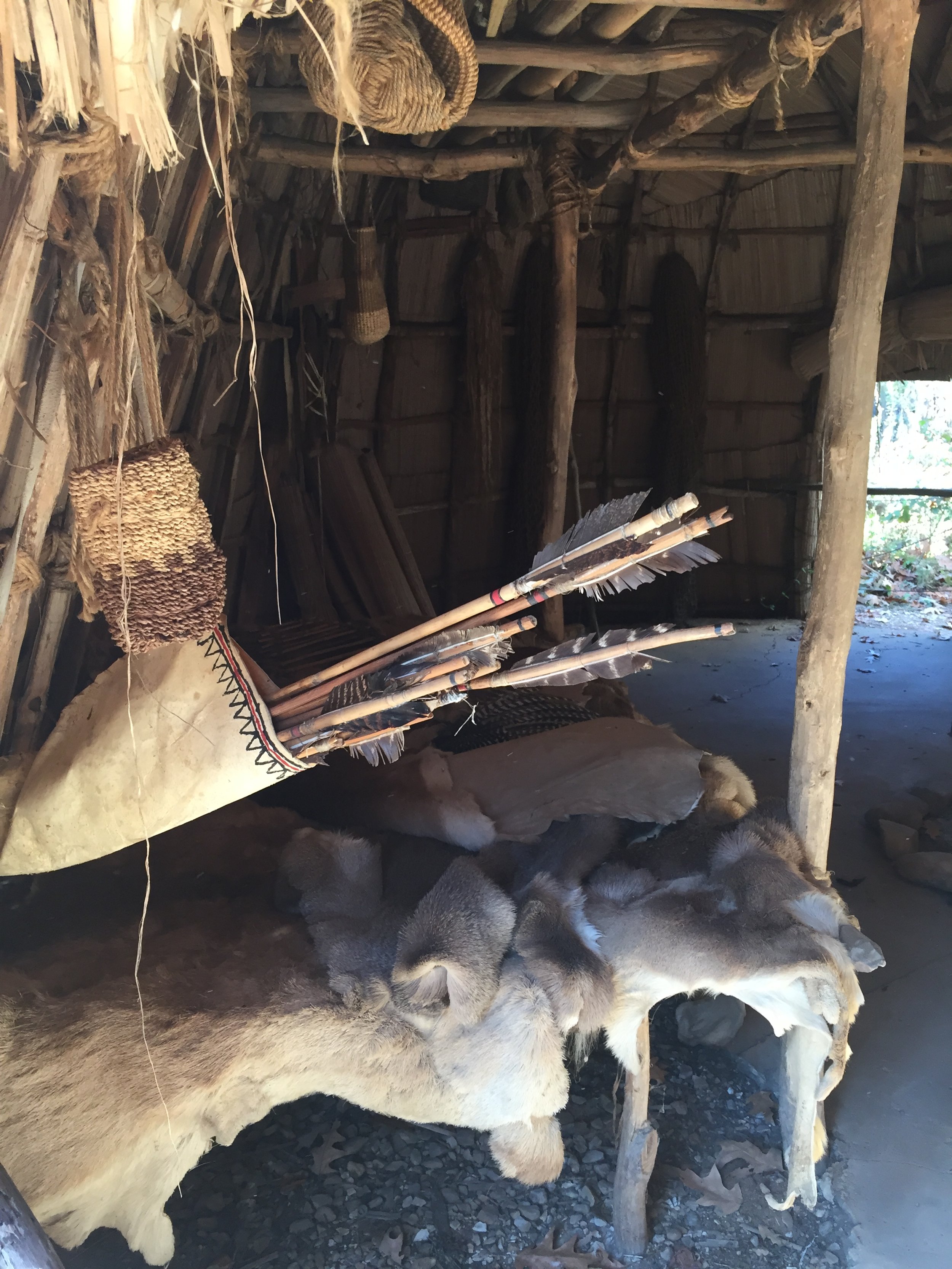
John Smith’s Indian Policy
Smith was an Englishman, and his mission was to establish England in America in response to inroads by France and other European powers.
The French came to Canada and established the fur trade. Indian tribes supplied the article in exchange for European trade goods. They fought among themselves to be first in line. They did not fight the French.
A Powhatan totem at Jamestown Settlement
The English came to Virginia to found American colonies to be “new Englands” of settlement, to become croft and town. The mild climate worked against prime fur harvesting and worked in favor of farming. The English and Indians fought each other from the first for occupation of the same ground.
Smith was of course in the middle of it. His profession was fighting. However, when it was his turn to decide the issue, his policy was deterrence. Peace, he told his opposite, would bring trade and cooperation. War, or treachery, would bring his limitless wrath and overwhelming force. His presence seems to have made this somewhat believable. In other words, he always pretended to his adversary that nothing would please him more than to get to use the arms of his profession. But it would be when the other guy started it.
A part of the recreated Powhatan town at Jamestown Settlement.
(All photos: Connie Lapallo)
At no time a subscriber to the noble savage myth, neither did he subscribe to the naked savage myth of naked savagery. He spent a great deal of time to study and understand the native language and culture, noting everything from hunting methods to religious practices and beliefs, marriage customs and child-rearing. Everything we know about the Indians of the day we owe to what the English recorded of them at the time, and the lion’s share of that is in the words of Captain John Smith.
When times were slim, he did not hesitate to billet colonists among the Indians, in effect to “go Indian” until supplies were replenished back at the fort, a policy unique among colonial leaders. He respected Indians as people but held no illusions about the cultural disparity.
The cultural disparity was a case of Stone Age (Indian) versus Iron Age (European). Nowhere greater than in terms of land, an Iron-Age family of six (three generations) could subsist on ten cleared acres, farming and stock-raising, your typical pioneer homestead. A Stone-Age family of the same size, hunting, gathering, gardening, needed ten square miles, nearly all of it wilderness.
Jamestown Settlement’s Powhatan home, which was called a “yehakan.”
It is difficult for us to keep this in mind reading his glorious transcriptions of Powhatan’s speeches, along with William Strachey’s verbal portrait, that have elevated the mamanatowic of Tsenacomaca as one of the truly great characters of American history, the one man who could match wits with our Captain in diplomacy and barter. Both were students of Machiavelli. If Smith had read The Art of War, Powhatan Wahunsonacock had read The Prince.
But neither Smith nor Powhatan could control the conflict that was always breaking out between two nations on one acre with entirely different definitions of what an acre was. Powhatan was limited because of the demand racing among his people for European trade goods. Smith was limited because the London Company was not interested in what the Virginia Indians had to trade unless they traded land. Meanwhile individual theft and smuggling were rampant, indeed savage, on both sides.
The tragedy at the Nonesuch settlement at Powhatan village and the raid on Paspahegh in 1609 show Smith at bottom, discouraged and depressed. If there was nothing quite noble in the savage, there was nothing but the ignoble in the party of Francis West. At Paspahegh Smith seems to be ashamed that he was ever a soldier at all.
Smith believed that the small native population would be assimilated through labor like an immigrant group. (See Quotes). In another place, he states his belief that the native population could reside in situ in cultural pockets while the bulk of the land was settled as an English commonwealth. Oddly enough, although many tribes were displaced and fragmented by removals, the tribal units that continue to exist in eastern Virginia are reasonably close to where he found them.




